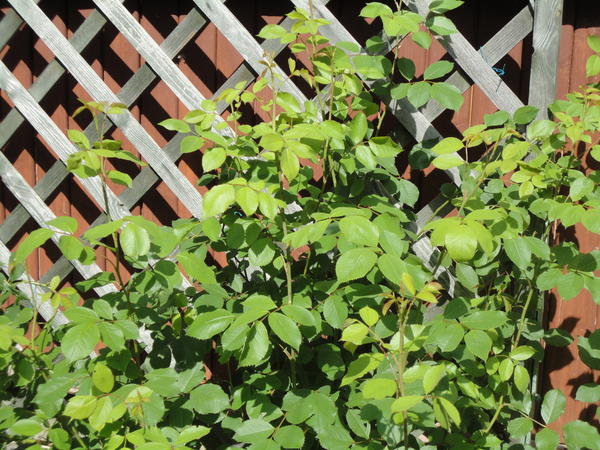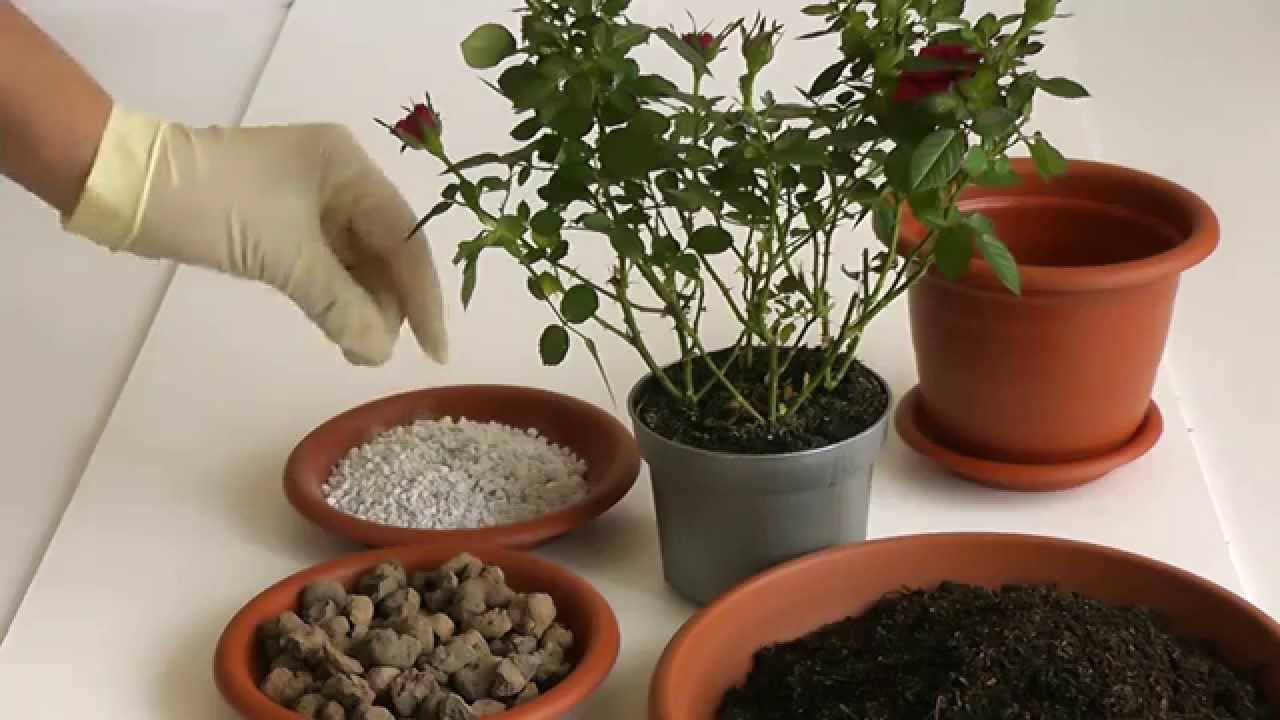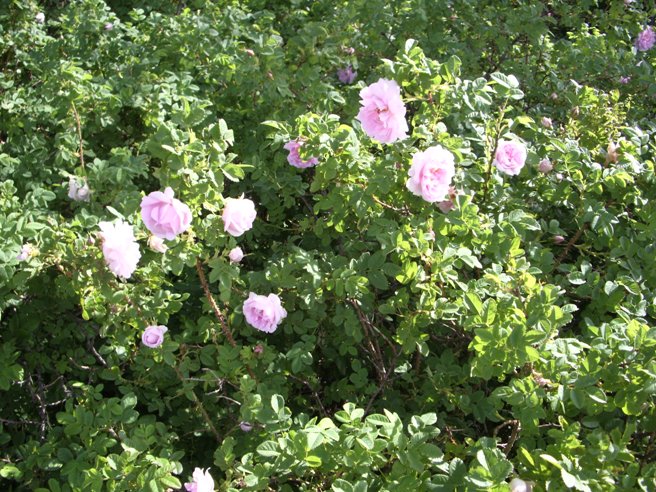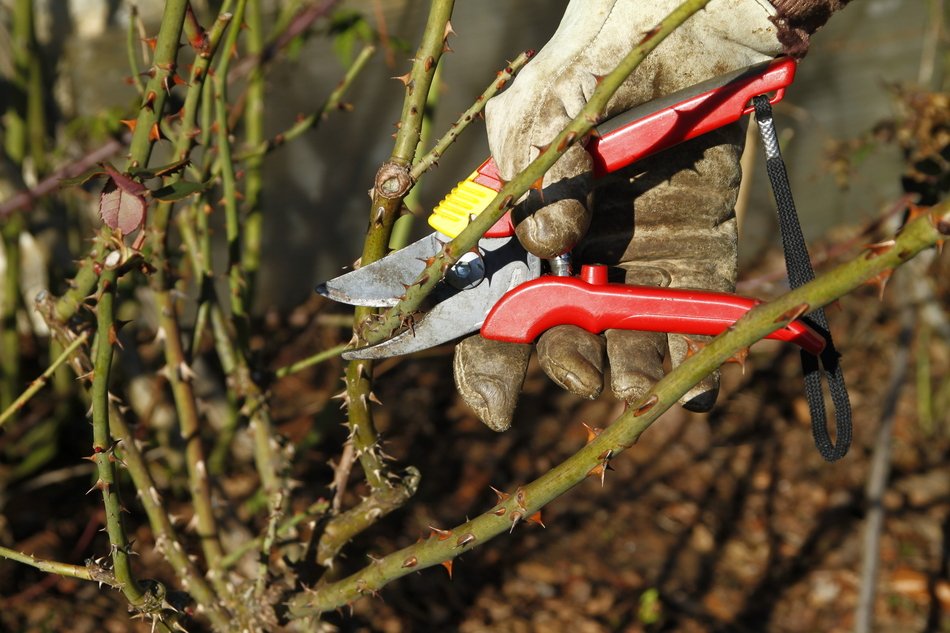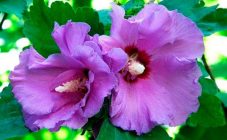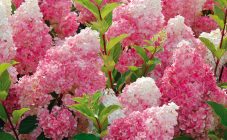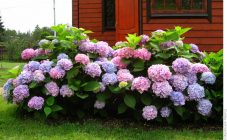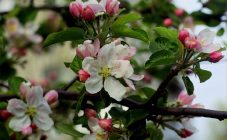Content:
Roses adorn parks and gardens with exquisite flowers. And, when all of a sudden flowering does not come, the gardeners, especially the inexperienced, panic. The reasons why the rose does not bloom are numerous: age, lack of attention, improper pruning.
General rules for caring for roses
Roses in open ground, as well as domestic ones, need a certain level of soil moisture, proper pruning, and winter rest.
Pre-winter pruning
Every year, so that roses can fully rest in winter and gain strength, autumn pruning is carried out. After her, in the spring, the shrub will be able to bloom much earlier. If the reason for the lack of color lies only in the absence of pruning, then by the summer it will be possible to admire the blossoming buds.
The most favorable time for pruning is when the night temperature approaches zero degrees and stays at this mark for some time. If the procedure is carried out earlier, in a warmer period, then the bush can continue to grow, forming young shoots. Frost will destroy them, and the flower will lose its strength.
The cut bush can withstand a drop in temperature to -10 ° C without additional shelter. For a quiet winter, the plant is covered with a dry leaf, sawdust, spruce branches. Many growers cover the garden bush with plastic bags and add earth to the bottom to create a more comfortable wintering condition for the culture.
The indoor flower also needs rest. Continuous flowering can quickly drain the plant.
When the flowering is over, the stem is cut off. The old stem is removed at the root, the height of the stumps should not exceed 3 cm. A strong young shoot is cut off above the fifth bud.
After that, the flower pots are taken out into a cool room.
Transfer
Garden roses can also be grown in pots, but the development of the root system is faster. In this regard, every year you need to transplant, each time increasing the volume of the pot. However, no matter what size the flowerpot is, the flower must be planted outside for 5-7 years.
For indoor varieties, you cannot immediately use a large flowerpot. Until the roots fill the entire volume, the rose will not bloom. This error can be corrected by transplanting into a smaller flowerpot.
Watering and fertilizing
Garden flowers, and especially indoor flowers, need feeding and watering. If you stop watering a garden flower, it will be able to get the necessary moisture from the soil and survive a forced drought, while a rose in a pot will completely dry out in a few days.
Watering the garden bushes is stopped immediately before the autumn pruning. An excess of moisture in the soil will negatively affect the root system.
Watering resumes after the land dries up from melt water. Then nitrogen is introduced to force the plant to bush more intensively.
Rose health
Any rose loves spraying with cool water. From this procedure, new buds are formed faster and their color is richer. After spraying, the room is ventilated. With stagnation and lack of air, indoor roses get sick.
The rose will signal a lack of moisture with yellowing and drying leaves. On hot summer days, when the buds begin to bloom intensively, the frequency of watering and spraying increases.
Some varieties of roses cannot bloom because they have a bad neighbor in the flowerbed. Lilacs, spirea, and mock-orange prevent roses from blooming. They oppress the flower, actively taking away food. The rose should be helped and transplanted to another place.
How many times a year do roses bloom
The flowering pattern divides plants into single flowering and repeated flowering. Many species form buds on last year's shoots. Wild roses are the first to bloom, but their bloom is short and one-time.
Garden roses bloom a little later, but among them there are varieties that have a repeated flowering period. The second time roses bloom weaker, their flowers are smaller.
Modern breeding has provided a huge number of varieties of re-blooming roses that adorn the garden before frost. It is very rare to see a rose bloom for the third time. This mainly happens in plants that are more than 20 years old. It will not be superfluous to mention that such specimens were properly cared for.
It is possible to make a rose bloom a third time, only for this it is necessary to create ideal conditions for its growth and make a number of manipulations with equalizing pruning and blooming. This is done in greenhouses where flowers are grown for sale.
The bushes of the first year planting may not bloom. It depends on the planting material and the literacy of the grower. Moreover, the first flowering is not at all a necessity: the shrub must first be allowed to grow stronger, then the flowering will be generous, however, next year.
Why roses do not bloom well
If the rose bushes began to bloom poorly or completely stopped, then something in the care was done wrong. Or maybe the pests have tried.
Wrong landing site
Of decisive importance in the cultivation of roses is their planting. Flowers are very fond of warmth and a lot of light. They can develop normally if they are provided with full sun illumination for at least 8 hours a day. The plant will not bloom in shaded areas.
The necessary environmental conditions for a flower are lack of competition, permeable fertile soils, sunlight. The best option for planting a flower is monoclumba or rose gardens.
Incorrect cropping
Incorrect pruning is also the reason why the rose does not bloom. Some rose bushes cannot be heavily pruned in spring; only sanitization is practiced. This group includes klimings, English varieties, shrubs.
The long stem of the shrub, cut in half, will bloom too late, if ever, to discard the buds. The rose will eliminate the lack of green mass at the expense of flowering.
To stimulate the appearance of flowering shoots, wilted flowers must be removed in a timely manner. It is advisable to carry out this procedure daily. At the same time, blind shoots should be identified and shortened to a strong bud. The rose begins to branch out, throwing out new shoots on which there will be buds.
Spring pruning helps correct fall errors. All missed unproductive shoots, very thin, damaged should be eliminated immediately. The shrub freed from them will concentrate on the creation and flowering of the main ones.
Improper care
The culture requires intensive care: fight against diseases, pests, additional nutrition. An undernourished, weakened shrub will shed its leaves rather than bloom.
However, in feeding the plant, you need to observe the measure so that later you will not be surprised why the rose does not bloom, but gives only foliage. In very many media there are recommendations for weekly feeding of roses. This cannot be done. Overfed plants grow intensively and build up green mass. And if time is devoted to flowering, then it is extremely small: 1-2 buds can appear over the entire season.
Feeding roses should be justified and balanced. Signs of a lack of fertilizer:
- thin shoots;
- spots appear on the foliage;
- weak flowering.
Only then can you help the roses with nutrition. With the onset of flowering, the culture will need potassium magnesium, potassium monophosphate. Flower growers with extensive experience often refuse chemical fertilizing in favor of organic matter: why treat them with them, if there is horse manure. Its effects on roses are simply magical - the flowers are bright, strong, the flowering is long, and the rose itself does not get sick.
Aging, growth
Full flowering will not occur if the bush strangles the root shoots. A rosehip, on which a rose is grafted, will give birth to a lot of shoots. It is easy for an inexperienced summer resident to make a mistake and take it for the stems of a grafted culture. Continuing to curl inside the bush, wild shoots deafen it, take away food, space, air, light. The dominance of the rose hips indicates a mistake in planting: improper penetration.
Very old rose bushes also stop flowering intensively - only one bud may appear on the bush during the entire season. Such plants rejuvenate.
It is difficult for old pink wood to feed the foliage and especially the flowers. Spring sanitary pruning helps avoid this problem. By sawing out stiff stems, the owner helps the rose in the formation of new, young ones.
Ambulance
It happens that all the conditions for caring for a rose are met: young, has optimal nutrition, root shoots are absent, the planting site is good, but still it does not bloom. The young florist is perplexed and gives up.
Activities should be performed:
- Remove all unnecessary shoots without exception - thin, blind, small.
- Following is a stimulating circumcision on a strong kidney, leaf.
- Offer the culture humate and potassium with trace elements.
Pests and diseases do not allow the plant to bloom. For each variety, the reason for this case is individual:
- If the shoot is affected by a fire blight, it will not bloom. The disease affects the plant during wintering under cover. In the spring, after removing the shelter, you should immediately inspect the bush and remove the diseased parts until they have infected the entire bush.
- Overcrowding of plants can provoke the appearance of powdery mildew. Shoots are covered with white bloom. Affected leaves, twigs will dry out soon. Indoor plants are placed more rarely, and it is recommended to plant those growing in the garden. Roses are treated with special means.
- Gray rot can affect both the very bottom and the very top of the rose. A soda solution will help to eliminate it. Previously, a film is spread under the bush, covering the soil so that the solution does not get on it. A mixture of soap and brilliant green gives a good effect.
- Of the pests, the spider mite most often attacks the rose. Its presence is signaled by gradually expanding white dots. Only a preparation from acaricides will rid the plant of the pest.
- Thrips and aphids inhabit flower buds and top leaves. The lower part of the bush is also attacked, but the middle is always left untouched. Only insecticides can get rid of these parasites.
Florist recommendations
For a long time practicing flowers, each gardener accumulates his own personal experience, writes down useful observations and methods applicable to certain flowers.However, there are universal tips and observations that can be applied to many species:
- Feeding indoor roses during dormancy will result in over-stretching of the stems.
- Finicky home roses can be protected from pests by putting several match heads in a pot when transplanting.
- When a rose lags behind in growth, it is difficult to wait for it to bloom. Onion infusion will help to correct this situation. It is a unique natural stimulant and antibiotic.
- The faded colors of foliage and flowers on rose bushes can be revived with banana broth. The crushed peel is poured with boiling water and kept for 2 days before feeding.
If you pay proper attention to rose bushes, no pests and external reasons will prevent them from delighting everyone with their flowering.
